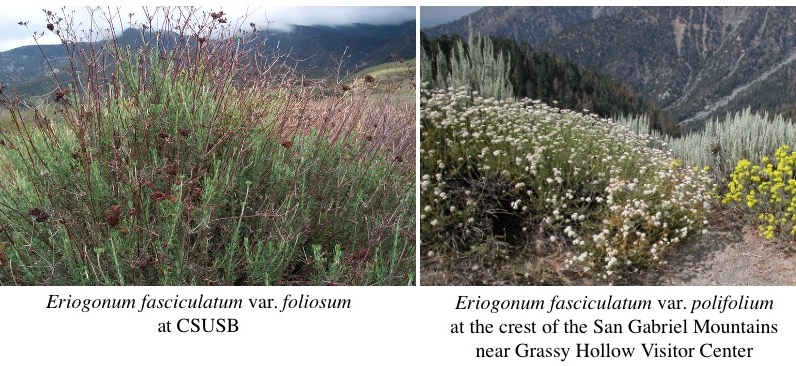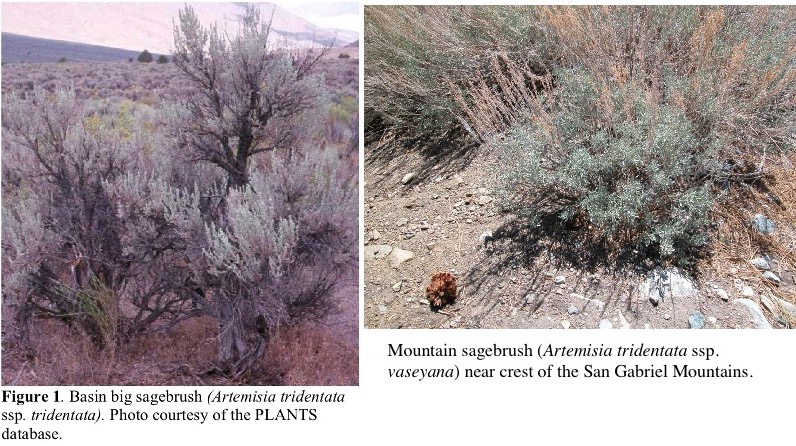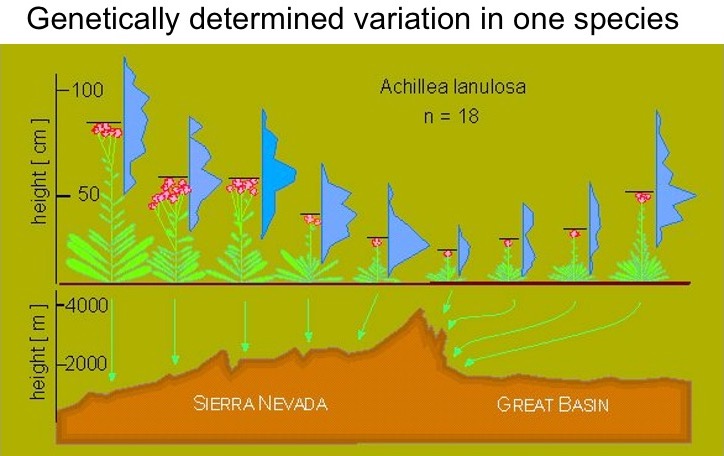High-elevation ecotypes and subspecies
Many species grow across a wide range of elevations. In most, the plants that grow at high elevation look different from those that grow at low elevation. In some cases, those differences may simply be due to the fact that they develop under different conditions and, therefore, develop differently. In other cases, the differences are genetically based.
If a species has populations grow in different environments, these populations (or sets of populations) are considered different ecotypes if
- the populations are genetically different from each other, and
- the genetically-based trait differences are adaptive
In terms of high- and low-elevation ecotypes, this means that populations at high elevation have genetically based traits that allow them to perform better at high elevation. Conversely, populations at low elevation have genetically based traits that allow them to perform better at low elevation. If you try taking seed from high elevation and planting it at low elevation, the progeny will not perform as well as progeny of the low-elevation population. The converse is also true.
In some cases, we recognize these differences taxonomically as subspecies or varieties of a species. In other cases, the genetic differences are functionally important, but may not be obvious enough to merit taxonomic distinction.
One species that has four recognized varieties is California buckwheat (Eriogonum fasciculatum). Most plants found on the CSUSB campus are Eriogonum fasciculatum var. foliosum. This variety can grow to be 60 - 150 cm tall. It does not grow above an elevation of 1300 m.
In contrast, the variety that reaches the highest elevation (2500 m), is a shorter variety: Eriogonum fasciculatum var. polifolium. This variety only grows to be 20-60 cm tall.

Similarly, there are multiple varieties of Artemisia tridentata in California. The most common variety at lower elevations in transmontane regions of California is big sagebrush (or basin big sagebrush). It grows may grow to a height of 2 m, and it grows at elevations below 1900 m. Mountain sagebrush may grow to a height of 1 m, but it keeps its leaves low (see photo). It grows at elevations of 1800 - 3000 m and higher.

Check your understanding:
Identification of ecotypes
Remember what an ecotype is.
Check your understanding:
Investigators have been exploring the existence of ecotypes in plant species since the 1920s. The standard approach to identifying whether populations are genetically different has been to grow plants from different populations together in a common environment (e.g., from seed) and see if plants from different populations retain any differences that were seen in the field. Since the plants are being grown in a common environment, any differences seen are probably genetically based differences. The "common garden" experiment grows plants together in a common environment to identify genetically based differences.
To determine whether populations are adapted to local conditions further investigation is needed. Reciprocal transplants, growing plants from different populations each other's native environments, are used to test for local adaptation.
Check your understanding:
in the 1940s, Clausen, Keck and Hiesey, from the Carnegie Institution at Stanford University, set up extensive experiments that tested for ecotypic differences in a number of species across a range of elevations in California.

The figure below shows just one example of their results. The height of yarrow plants grown from seed collected from different populations and grown in a common environment differed. This figure does not show heights of plants growing in these different locations. It shows the height of plants grown in a common environment but collected from nine different locations. These locations spanned an elevational range of over 2000 m in the Sierra Nevada Mountains.

The pattern shown above, with populations from higher elevations being genetically short, was found repeatedly in multiple species.
Other traits that varied included traits that were not so obvious, such as the date that flowering began.